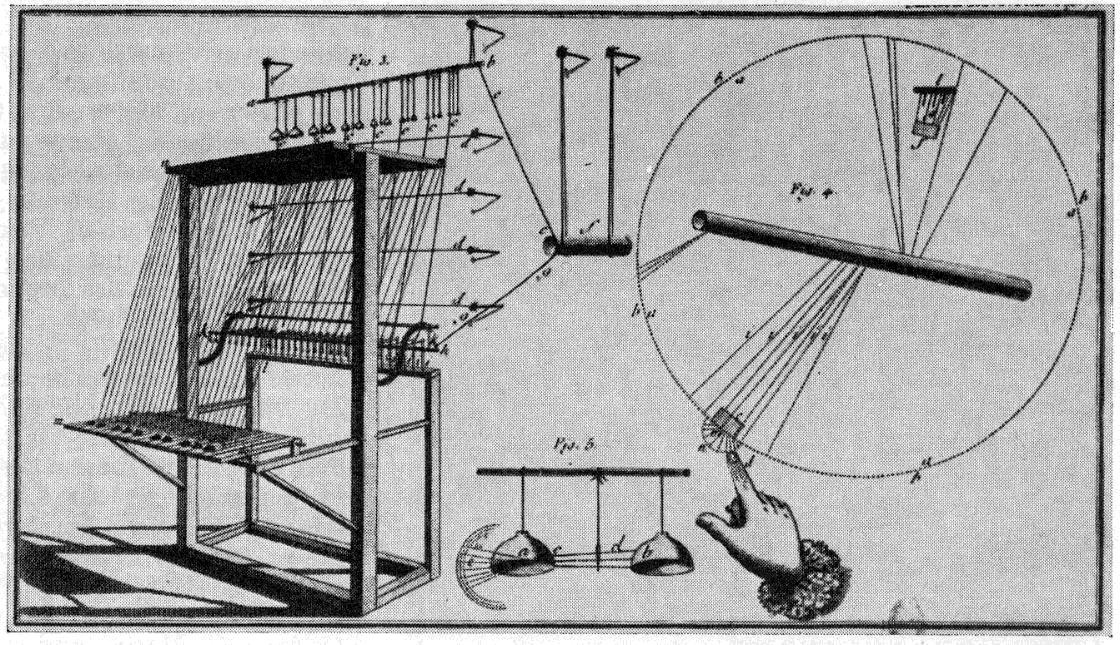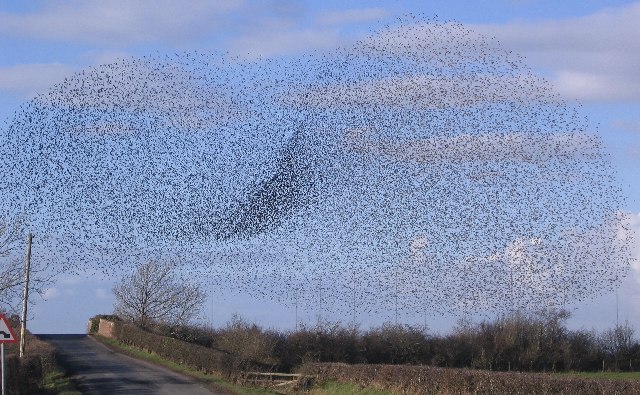Vision and Context
PowerFlowerBells Network
Vision and Context
Vision of powerflower bells which came out of the concept of a cybernetic algorithmic autonoumous networked unit (caanu) in the artworks in the seria social machines.
- See also:
- OVERVIEW for idea and concept of the project
Inspiration
The first vision was an outdoor accumulation of a lot of small sound generating devices in a quite silent environment, like a meadow, acting like a swarm of little musicians, generating an endlessly distributed composition in time and space. The communication between these items forms the basis for the compositions. Activated like propagating waves over space or playing rhythmical dialogue structures and even more complex algorithmic interactions makes it possible to generate music. Another vision is based on the artwork "The House of Sounds", where sound objects play individual pieces as cybernetic life forms and were able to synchronize and interact which each other. Also realized in a previous installations with the Autroids [autroids], robotic vehicles moving like swarms and playing music has been done.

PowerFlowerBell first sketch
In this vision of flower power bells, the objects can be seen as nice flowers in a meadow, enabled to generate musical tones. As they are powered up, they can interact with each other, giving concerts like crickets in a field, but in a much more (for humans) organized manner. The clinking can become a kind of spatial composition, rhythm and dynamics are parts of these patterns. Algorithmic concepts, like serial techniques, tropes [Hauer], cellular automata as algorithmic composition techniques are used. In order to achieve that, a procedural meta language for these compositions has to be implemented.
Furthermore they should be autonomous, maintenance-free, low-cost objects, since the number of objects should be experienced as countless. In addition they should be distributed over a wide area to enhance the spatial recognition of each item. As a consequence a a power generating tool, or at least one that can last very long with a small power supply, is necessary.
This objects should be enabled to communicate which each other in a mesh network. This idea came up from the "The House of Sounds"[2] project, done since 1996, where virtual sounds, as sound-lives, communicate which each other forming sound spaces. To implement this feature, they can establish a self-administrated network and can detect at least their neighbors and exchange information. The signal strength is measured to compare distances of nodes. The network could be implemented over audio domain or other wireless technologies like radio transmission. The last are more appropriate for low power implementation and a hidden, therefore secret communication. Of course this network is also used to maintain the items and to get information for service and monitoring, looking if they are still alive and how much they have played.
They also need a notion of time and energy, which means they should sleep and act only on certain environmental states. This could include "out of power", "low power", and silence in some sleeping periods.
The items are placed by the artist to occupy a designated area and will be set by sticking them into the earth (or screw them on the ground if more security is needed).
Sound generation
Sound generation is possible the most energy consuming task a powerflowerbell has to execute. Loudspeakers often have a pretty bad efficiency factor, especially if they are small. Therefore the idea came up to use one of the first inventions to distribute artificial signals in western culture, the bell.

"electric harpsichord" von Jean-Baptiste de Laborde 1761
Also looking at the first instrument, which could produce musical signals with the use of electricity, also known as the first electronic musical instrument (at the time of writing), "the electric harpsichord" von Jean-Baptiste de Laborde build 1761 [3], was an inspiration for choosing small bells. It showed that if mounted probably, they distribute most of the energy they get from the trigger as sound waves and has therefore a very high efficiency factor.[#assumption]

A first vision of the PowerFlowerBell
Other sound generators should also be available. Looking at new high efficiency small speakers like in our mobiles, it should also be possible to play tones for a short period of time but a mechanical sound generator would be more appropriate. Energy is also used for computing power needed for synthesizing complex sounds.
Power Plant
As an impact, each item should be its own power plant, to supply itself. Inspired from the intended environmental space, as we refer to the items as kind of flowers, we should use the same way to harvest energy from the environment like a flower does.
Therefore the idea of energy harvesting came up, using environmental power sources and collect them in accumulators or super capacitors. Looking at a plant, the sources are the sourness, acid from the soil as a small earth-battery, the sun, the wind as kinetic energy and temperature differences as thermodynamical power stations. Also additional artificial energies from our civilization could be used, like radiation energy.
Anyhow, every part of the item has to operate within ultra-low-power specifications to be not too wasteful with energy and keeping it small and simple using a limited set of these possibilities.
Swarming
(Swarming means using networks to form a swarm, used in nature and the military in a self-organizing sense.)
Networking
Communication between items should be implemented to form a local area network. This network should use ideas of communication of swarms. One of them is a self determining growing network, a mesh. Physical neighbors can detect each other first on the strength of communication. So the composition can take this into account. As many nodes should be remembered as memory is available for each node. Note that acquisition and storing statistic data needs extra energy and storage.
I call this idea the "map of the known world". Each item only needs to recognize its neighbors and by communicating it transmits information about other nodes appropriate to live parameters and saves the data as a network graph, the map of known world. With any other item integrated in the network, the knowledge is enhanced and the map extends. Therefore each item should have a unique identity, as a kind of unique address. Changes in the graph should be reflected.

network graph of the map of known world (graphic: schauer)
Networking should be done by ultra-low power. This can only be reached by using bursts of information for a very short span of time in some given time slots and by low energy transmitters with a short range. The more singular the node the more power it uses to find their neighbors.
Swarm organization
Swarm intelligence is the collective behavior of decentralized, self-organized systems, natural or artificial. The concept is employed in works on artificial intelligence.[BeniWang89] Here the assumption "the working load of a swarm is higher as the sum of the single working loads of each item" was an inspiration and the hypothesis "that the musical composition should also be enhanced if a swarm behavior is established" is stated herein.

birds swarm (foto:john holmes)

Example of a dynamic network formed by PowerPlants
Unlike swarms with moving units like birds, this units do not move. But they react on each other and transports information and therefore produce similar actions. The moving behavior can be imaginated as the movement of information, communication. This was explored with cellular automata like the Conway's "game of life". But also musical rules can be used to reach a similar effect, algorithms which has to be explored within these installations.
Notes & References
| Authors: | Winfried Ritsch |
|---|---|
| Date: | 12.11.2011 |
| Contact: | |
| Version: | 0.3.1 |
| Copyright: |
|
| [1] | an artwork at atelier Algorythmics from 1994, made of a network of robotic self driven speakers with tape recorders and players. |
| [2] | The house of sounds for virtual sounds living inside a computer network like the cyberspace, was implemented first 1994 as outdoor installation, later for 3D-Audio Systems, where an own communication language as Internet Protocol was defined. |
| [3] | The "electric harpsichord" by Jean-Baptiste de Laborde has been built in 1761 from Abbe Delaborde in Paris, France. With a small keyboard bells were triggered by electrostatic wires. |
| [4] | note: this is an assumption to be proofed in future. |
| [THS92] | "the house of sounds", a sound-installation http://iem.at/ritsch/art/netart/sndlives/ |
| [Hauer] | Josef Matthias Hauer developed the so-called „Tropentechnik“ as composition framework, see: Sedivy, Dominik. 2006. "Tropentechnik. Ihre Anwendung und ihre Möglichkeiten". PhD diss. Vienna. University of Vienna. |
| [BeniWang89] | Beni, G., Wang, J. Swarm Intelligence in Cellular Robotic Systems, Proceed. NATO Advanced Workshop on Robots and Biological Systems, Tuscany, Italy, June 26–30 (1989) |
